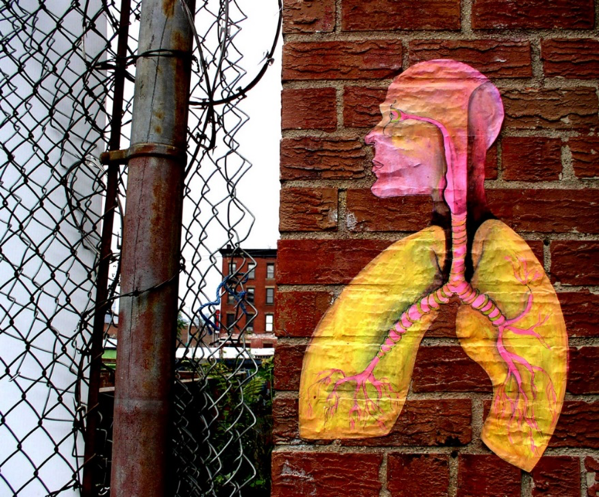The relationship between the body and the mind is probably one of the most elusive aspects of medicine. Although topics such as placebo effect and medically unexplained symptoms capture our imagination, it is the co-occurrence of common physical and mental health problems that impacts the most on patients’ well-being and everyday healthcare provision. Indeed, when we get sick, the intricate connections between the mind and the body become apparent.
Monika Waszczuk
Assistant Professor of Psychiatry, Stony Brook School of Medicine
Poor mental health is detrimental for physical health
More often than not, mental illness is not only a serious burden in its own right, but it also spirals to impact other aspects of health and functioning. For example, World Mental Health Surveys conducted in 17 countries in almost 50,000 patients have found that suffering from a psychiatric illness significantly increases risk of a wide range of physical conditions, such as arthritis, heart disease and cancer (1). The more mental disorders individuals experienced over the course of their life, the higher were the odds of subsequent physical illness diagnosis. This co-occurrence of physical and mental health is crucial for clinical practice, because it leads to poorer treatment compliance and worse outcomes. It is also directly linked to higher service utilization and medical expenditures (2).
Case in point: PTSD increases respiratory illness
A little known observation is that chronic respiratory disorders are among the most prevalent physical problems in individuals with mental illness (1, 3). In particular, in the international survey mentioned above, posttraumatic stress disorder (PTSD) was found to increase the odds of chronic respiratory disorder by about 50%, and doubled the odds of future asthma. This is an important observation for understanding health consequences of exposure to trauma, as it suggests that PTSD can cascade into a myriad of physical health problems, including chronic respiratory conditions.

Indeed, this is what a series of studies conducted by my research team has found. In several prospective longitudinal studies, we reported that PTSD symptoms pose significant risk for the onset and chronicity of respiratory symptoms in responders to one traumatic event, the World Trade Center disaster (4-6). Individuals who worked on the rescue, recovery and clean-up that followed the 9/11 attack have been exposed to a complex array of airborne toxins that affected their lungs. The responders have also experienced extreme psychological trauma, including fear for personal safety and exposure to victims’ body parts.
Our findings indicate that not only PTSD lead to worse respiratory symptoms, it also explained the relationship between the level of exposure to the World Trade Center disaster and subsequent respiratory illness. Importantly, the reverse relationship – respiratory symptoms leading to worse PTSD – has not been found. Taken together, our results add to the growing understanding that mental health problems following trauma are not only relevant in their own right, but also pose a significant risk to future physical health outcomes.
In what ways does mental health impact physical health?
There are many ways in which mental health can impact physical health. First, psychiatric illness can change patients’ lifestyle and everyday functioning in ways that are not conducive to maintaining physical health. This includes less exercise, loss of appetite, lower social contact that can lead to a loss of support network, and poorer adherence to treatment and medication. Such psychosocial pathways can become particularly impactful if the psychiatric illness persists over many years. Second, psychiatric illness shares a great deal of common biology with physical health. We know that there is a shared genetic vulnerability to many mental and physical conditions, and that psychiatric illness can further disrupt genetic, physiological and neurological processes in the body.
“We know that there is a shared genetic vulnerability to many mental and physical conditions”
Coming back to the example of PTSD as a risk for worsened respiratory illness, we are currently investigating several such potential mechanisms that can explain our findings. First, we ruled out smoking as an explanation. Although cigarette use occurs at an elevated rate among individuals with PTSD and is a leading contributor to respiratory illness, in all of our studies smoking did not explain why PTSD leads to respiratory illness. Second, several biological pathways could plausibly explain our results. PTSD is characterized by dysregulation of body’s systems responsible for responding to threat and stress, such as sympathetic hyperactivity, hypothalamic-pituitary-adrenal (HPA) axis functioning, and heightened immune response (7-11). Cumulative effects of malfunctioning of these processes over time can strain and damage airways, resulting in respiratory symptoms. Third, part of the explanation can be psychological. It is well established that patients with PTSD tend to be more sensitive to threatening cues in their surroundings, and perceive their environment with a heightened sense of threat (12, 13). Such a mindset can amplify their perception of certain physiological states, such as respiratory problems, resulting in increased detection and recollection of symptoms (14).
Overall, it is likely that a complex interplay of different biological, psychological and social processes explains why mental illness cascades into poorer physical health. Understanding these mechanisms can give insight into novel treatment targets and might inform better planning of public health services, supporting integrated medical and psychiatric healthcare models (15, 16)
References
- Scott KM, Lim C, Al-Hamzawi A, et al.: Association of Mental Disorders With Subsequent Chronic Physical Conditions: World Mental Health Surveys From 17 Countries. JAMA Psychiatry. 2015:1-9.
- Naylor C, Parsonage M, McDaid D, et al.: Long-term conditions and mental health: the cost of co-morbidities. London, UK: The King’s Fund, 2012.
- Himelhoch S, Lehman A, Kreyenbuhl J, et al.: Prevalence of chronic obstructive pulmonary disease among those with serious mental illness. American Journal of Psychiatry. 2004.
- Kotov R, Bromet EJ, Schechter C, et al.: Posttraumatic stress disorder and the risk of respiratory problems in World Trade Center responders: longitudinal test of a pathway. Psychosomatic Medicine. 2015, 77:438-448.
- Luft B, Schechter C, Kotov R, et al.: Exposure, probable PTSD and lower respiratory illness among World Trade Center rescue, recovery and clean-up workers. Psychological Medicine. 2012, 42:1069-1079.
- Waszczuk M, Li X, Bromet E, et al.: Pathway From PTSD to Respiratory Health: Longitudinal Evidence From a Psychosocial Intervention. Health Psychology. 2017.
- Pole N: The psychophysiology of posttraumatic stress disorder: a meta-analysis. Psychological Bulletin. 2007, 133:725.
- Alvares GA, Quintana DS, Hickie IB, Guastella AJ: Autonomic nervous system dysfunction in psychiatric disorders and the impact of psychotropic medications: a systematic review and meta-analysis. J. Psychiatry Neurosci. 2015.
- Pitman RK, Rasmusson AM, Koenen KC, et al.: Biological studies of post-traumatic stress disorder. Nature reviews neuroscience. 2012, 13:769-787.
- Pace TW, Heim CM: A short review on the psychoneuroimmunology of posttraumatic stress disorder: from risk factors to medical comorbidities. Brain, Behavior, and Immunity. 2011, 25:6-13.
- Ironson G, Wynings C, Schneiderman N, et al.: Posttraumatic stress symptoms, intrusive thoughts, loss, and immune function after Hurricane Andrew. Psychosomatic Medicine. 1997, 59:128-141.
- Paunovic N, Lundh L-G, Öst L-G: Attentional and memory bias for emotional information in crime victims with acute posttraumatic stress disorder (PTSD). Journal of Anxiety Disorders. 2002, 16:675-692.
- Bar-Haim Y, Lamy D, Pergamin L, Bakermans-Kranenburg MJ, van IJzendoorn MH: Threat-related attentional bias in anxious and nonanxious individuals: a meta-analytic study. Psychological Bulletin. 2007, 133:1.
- Mahaffey BL, Gonzalez A, Farris SG, et al.: Understanding the connection between posttraumatic stress symptoms and respiratory problems: contributions of anxiety sensitivity. Journal of Traumatic Stress. 2017, 30:71-79.
- Unützer J, Schoenbaum M, Druss BG, Katon WJ: Transforming mental health care at the interface with general medicine: report for the presidents commission. Psychiatric Services. 2014.
- Druss BG, Silke A: Improving general medical care for persons with mental and addictive disorders: systematic review. General Hospital Psychiatry. 2006, 28:145-153.


